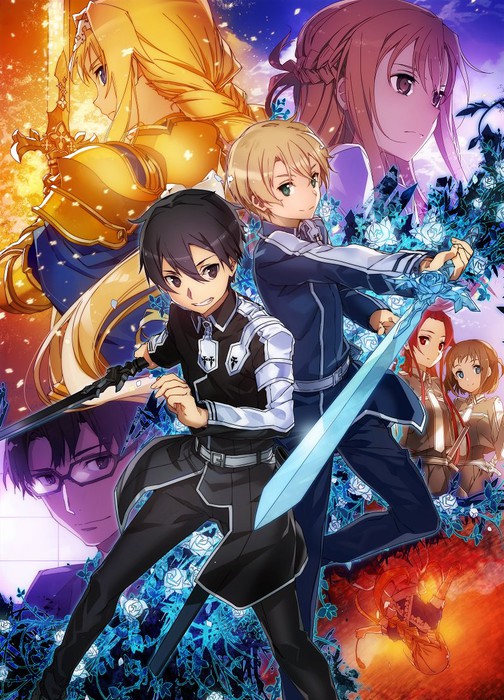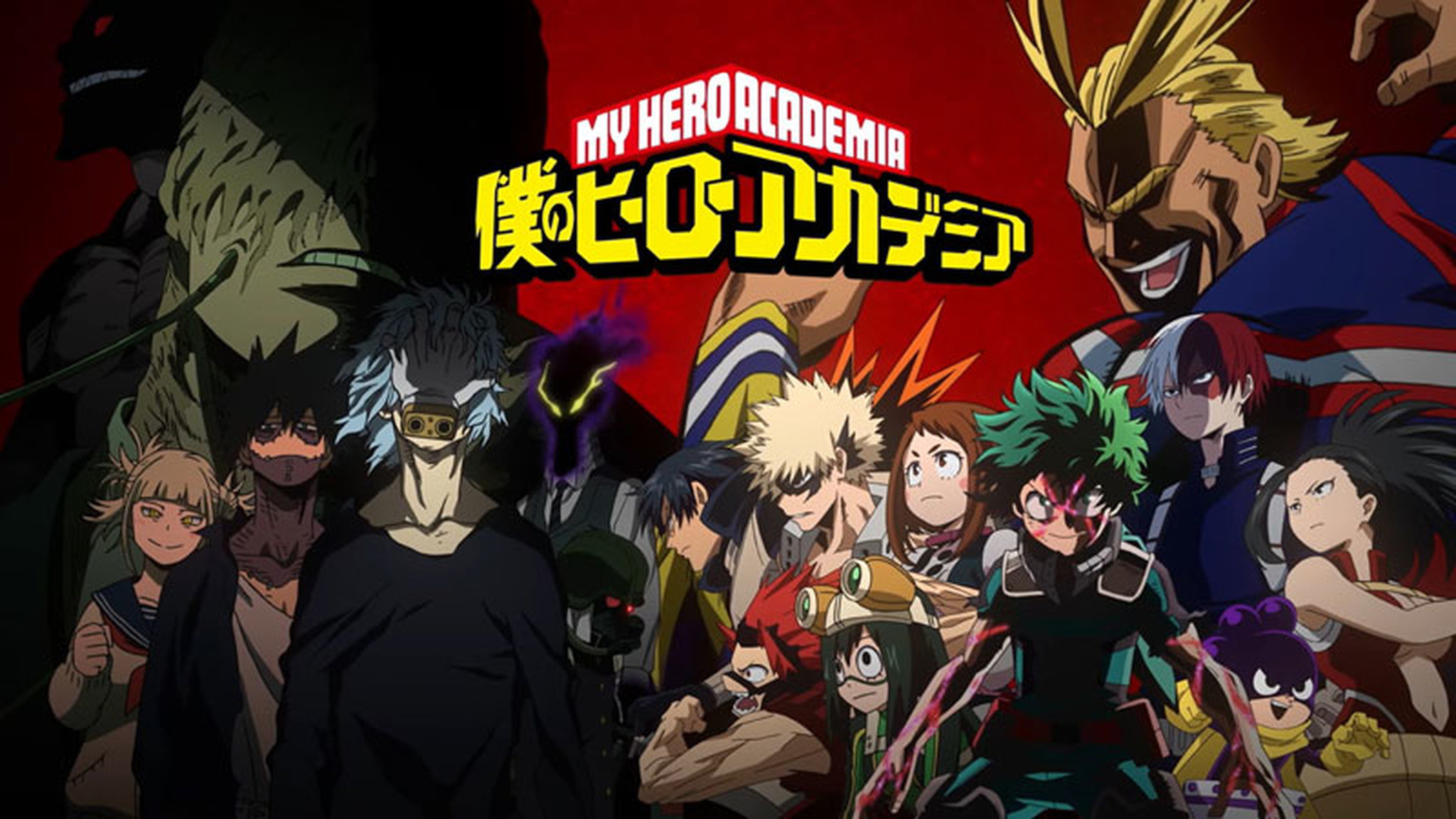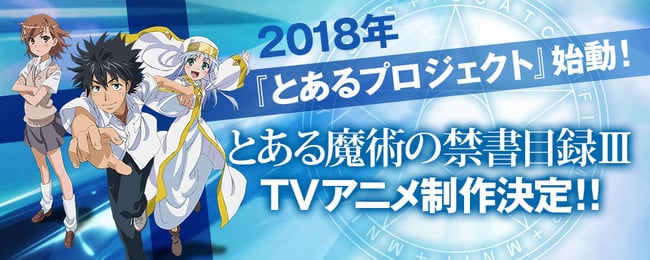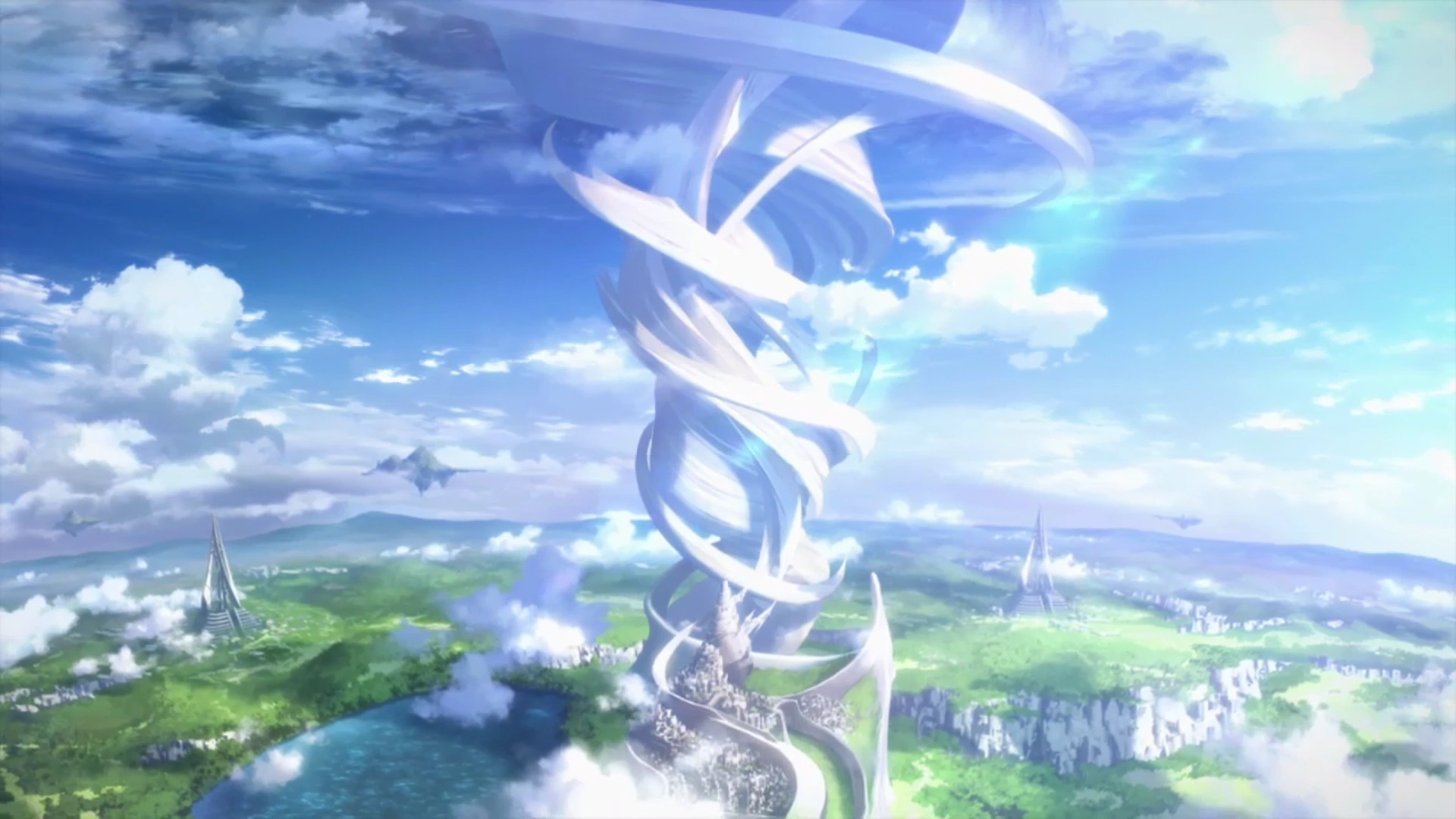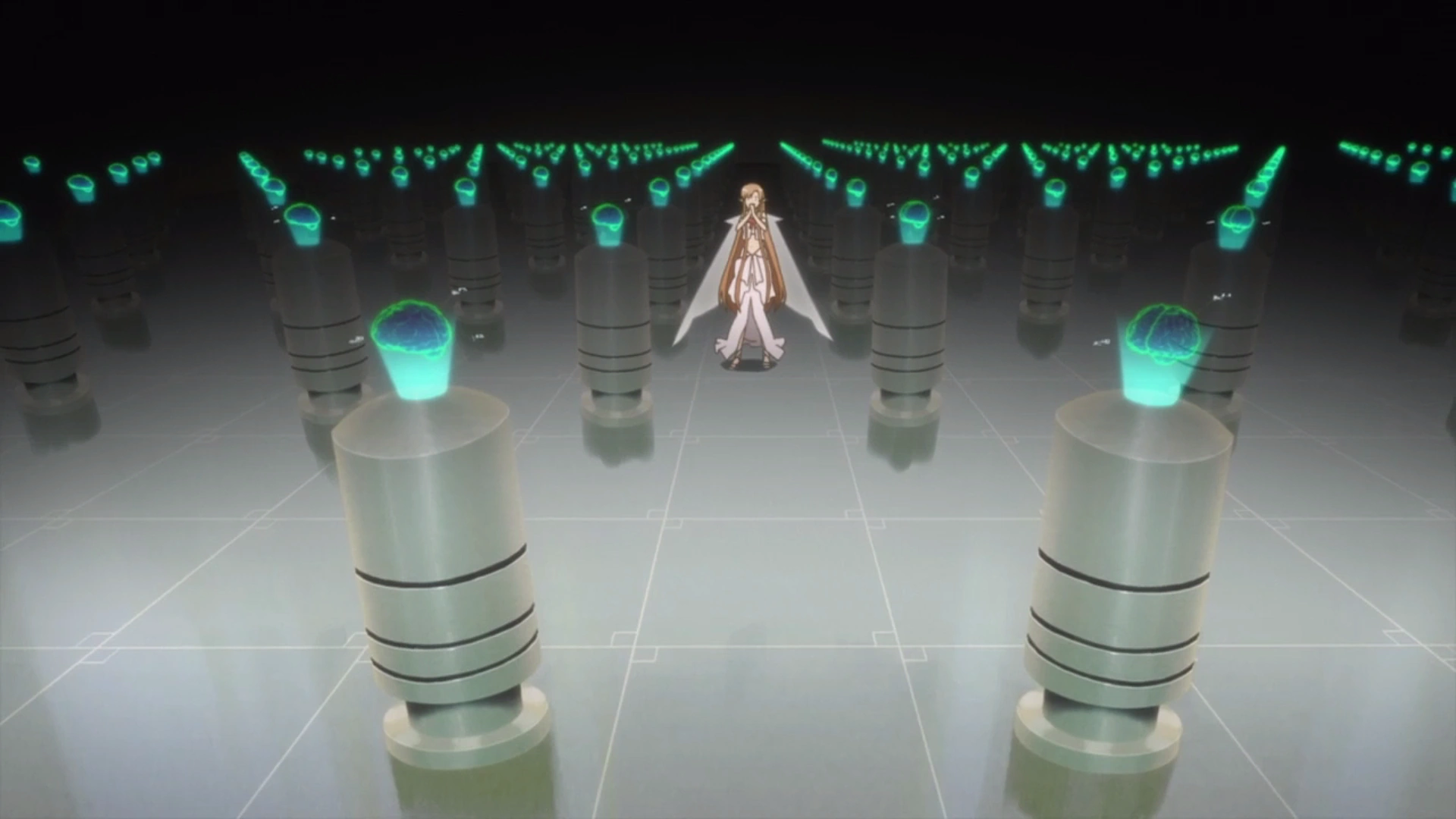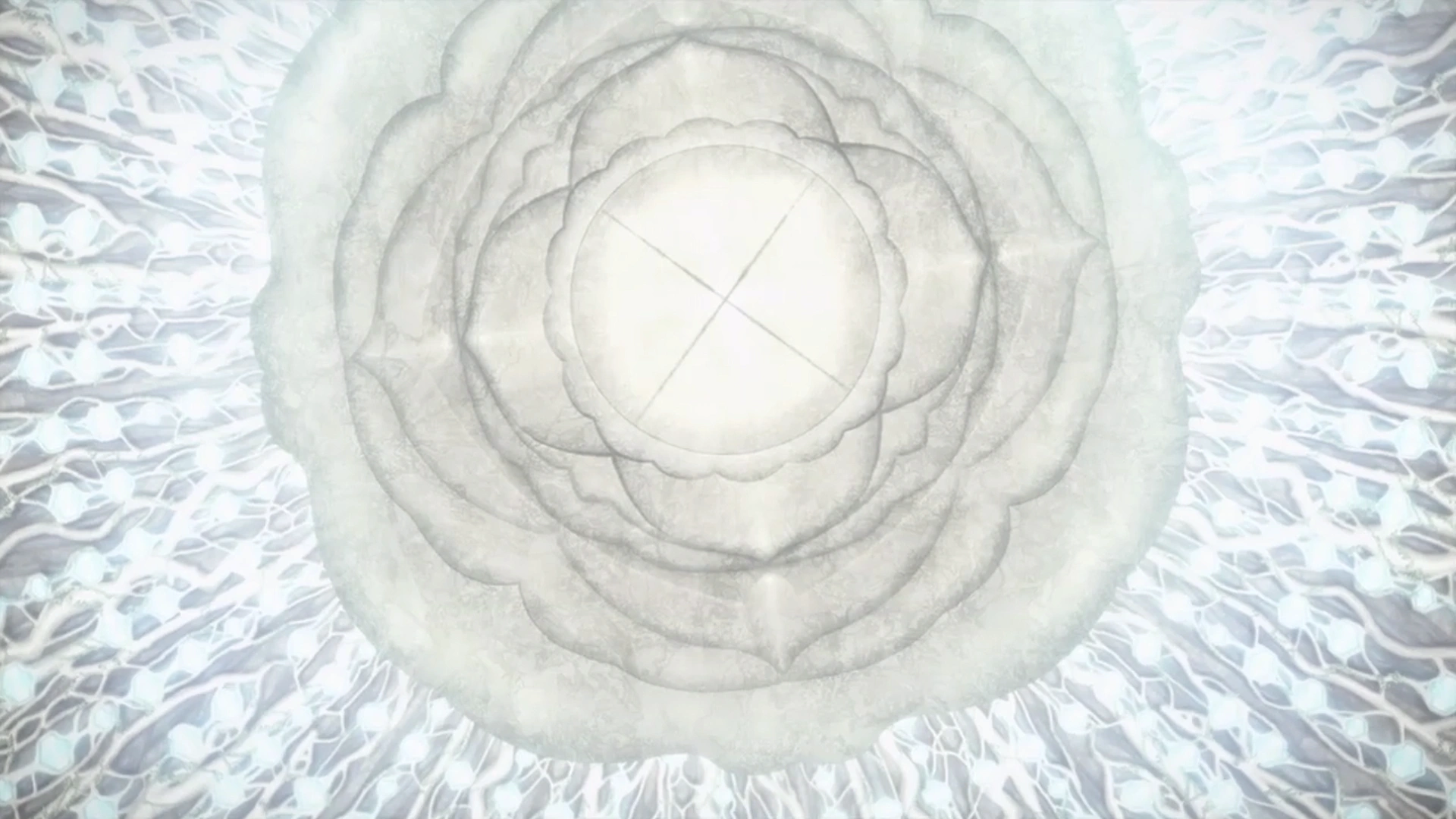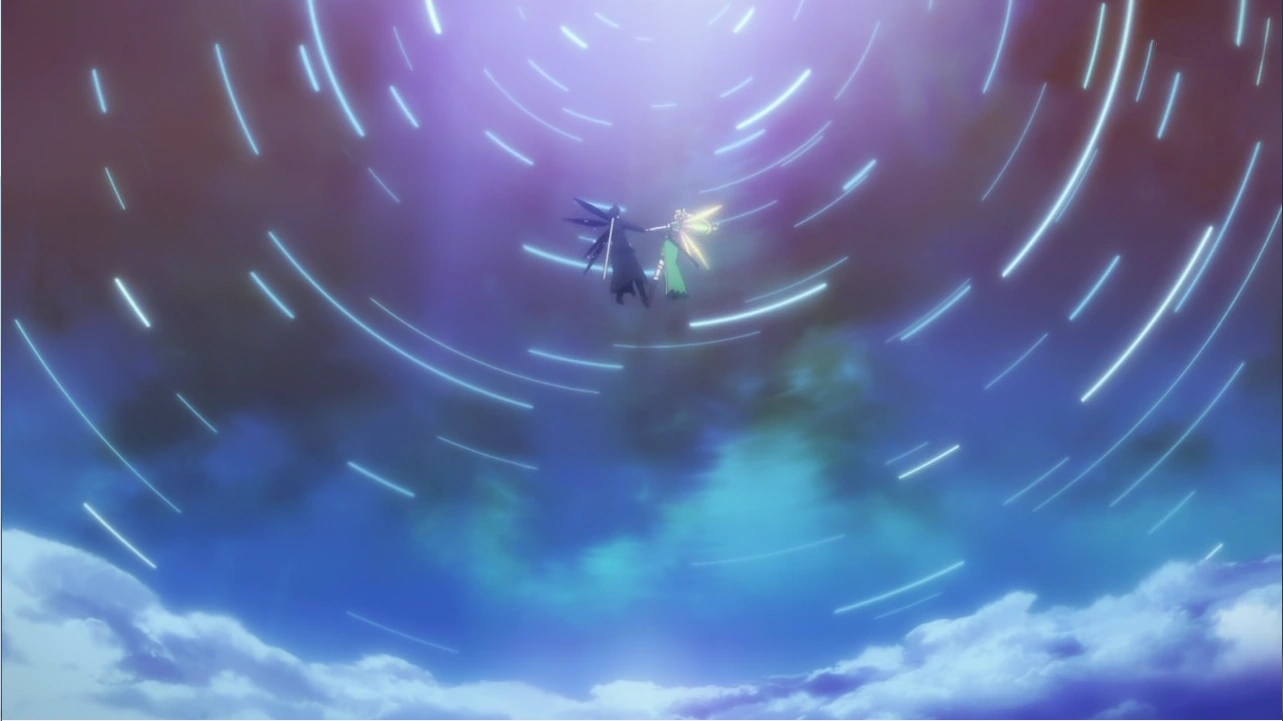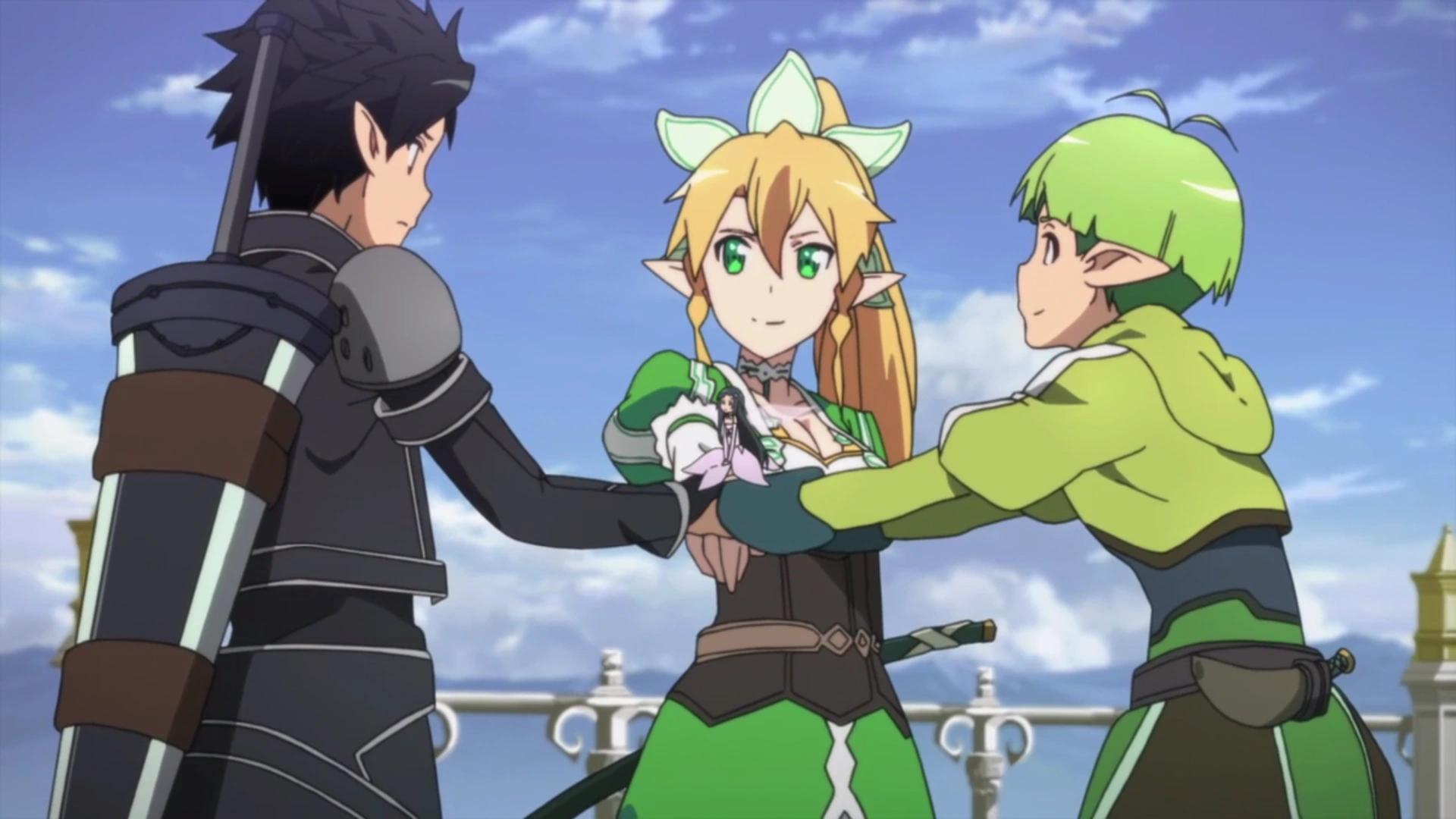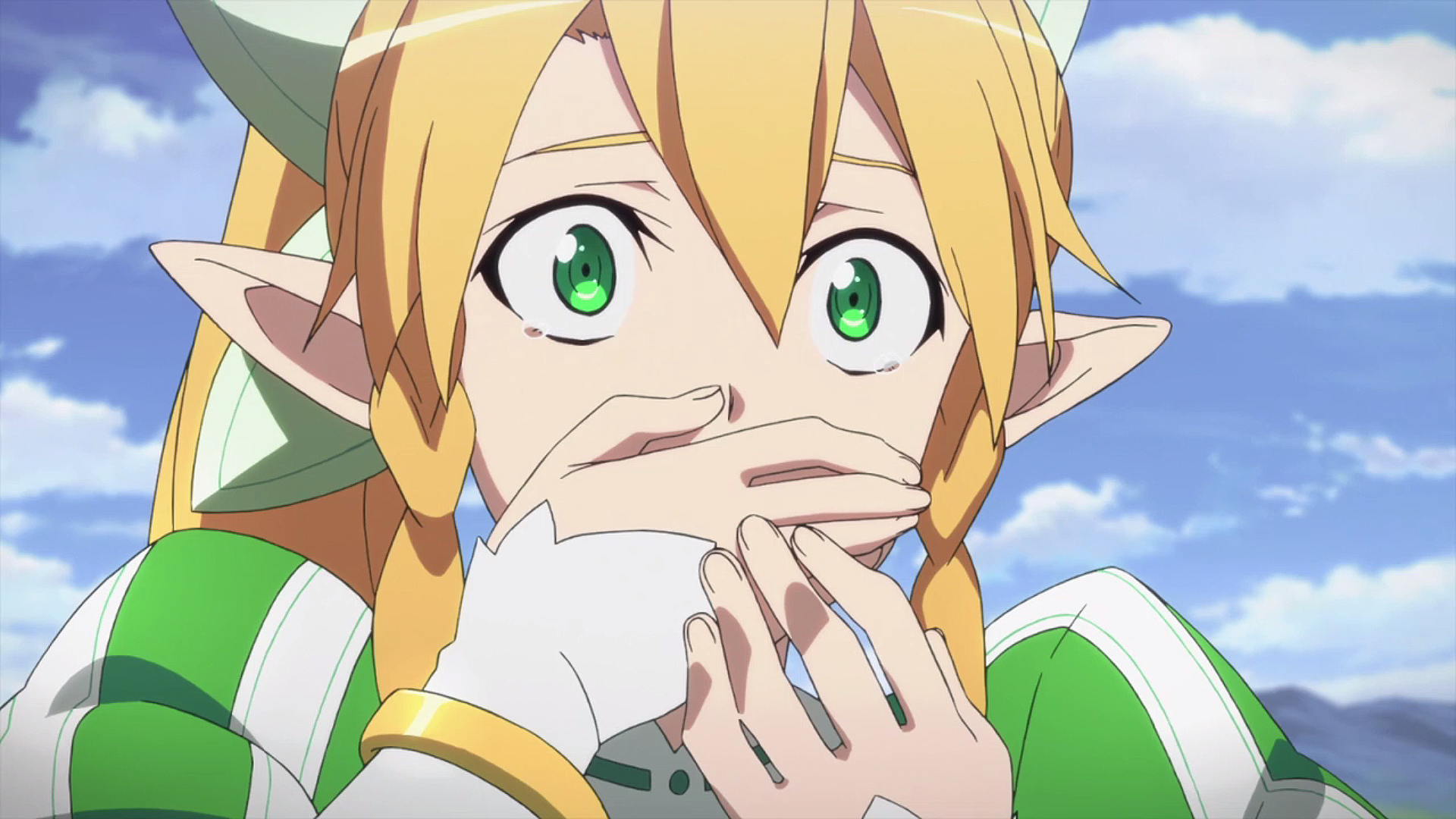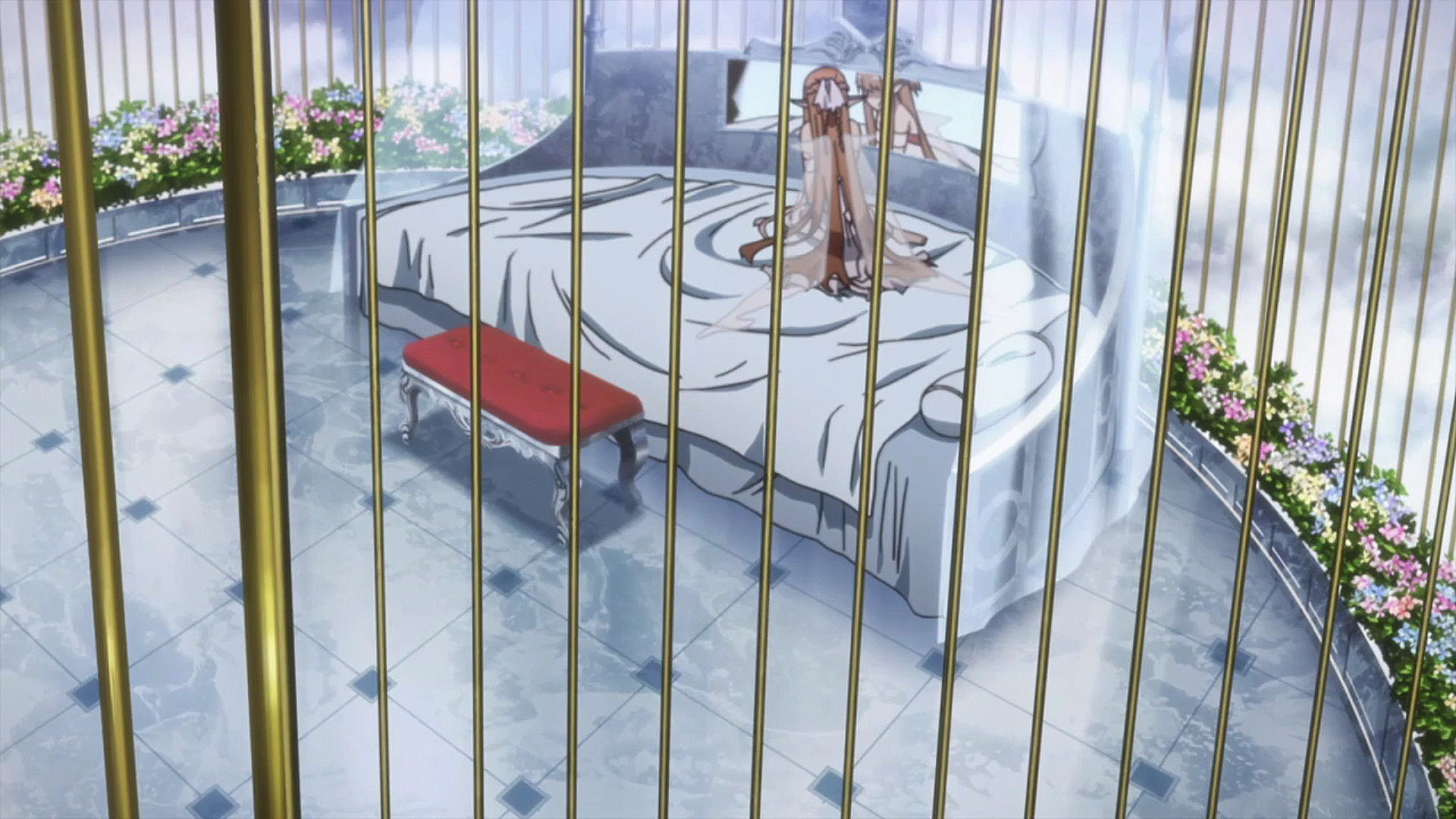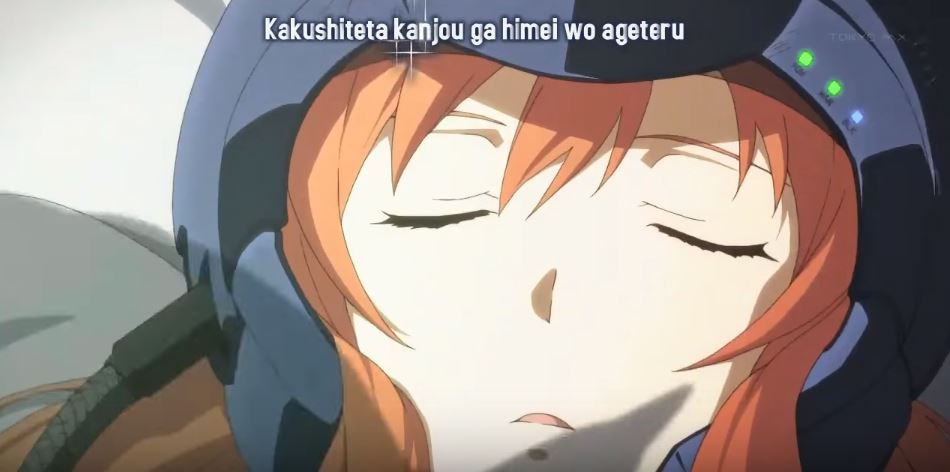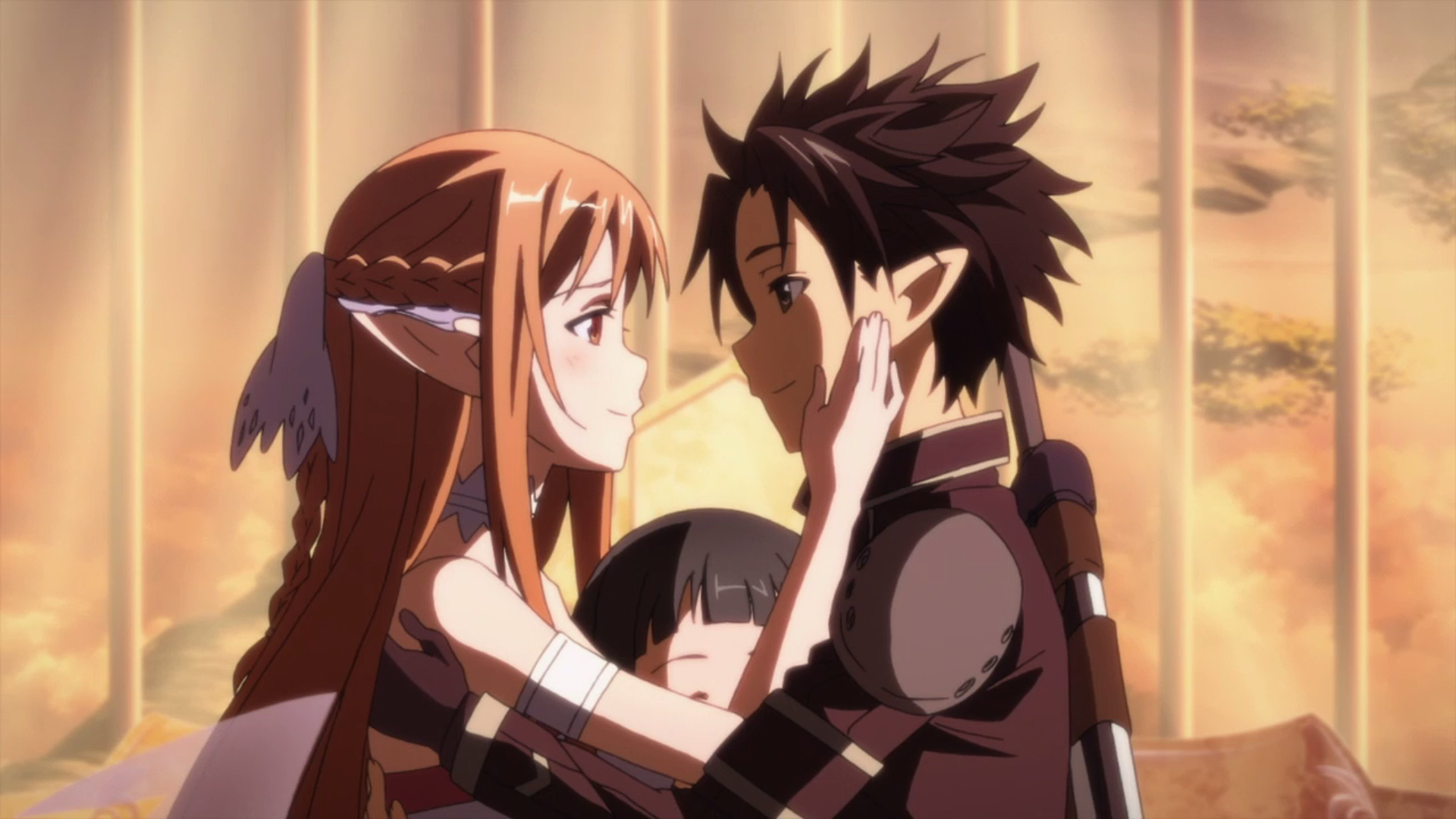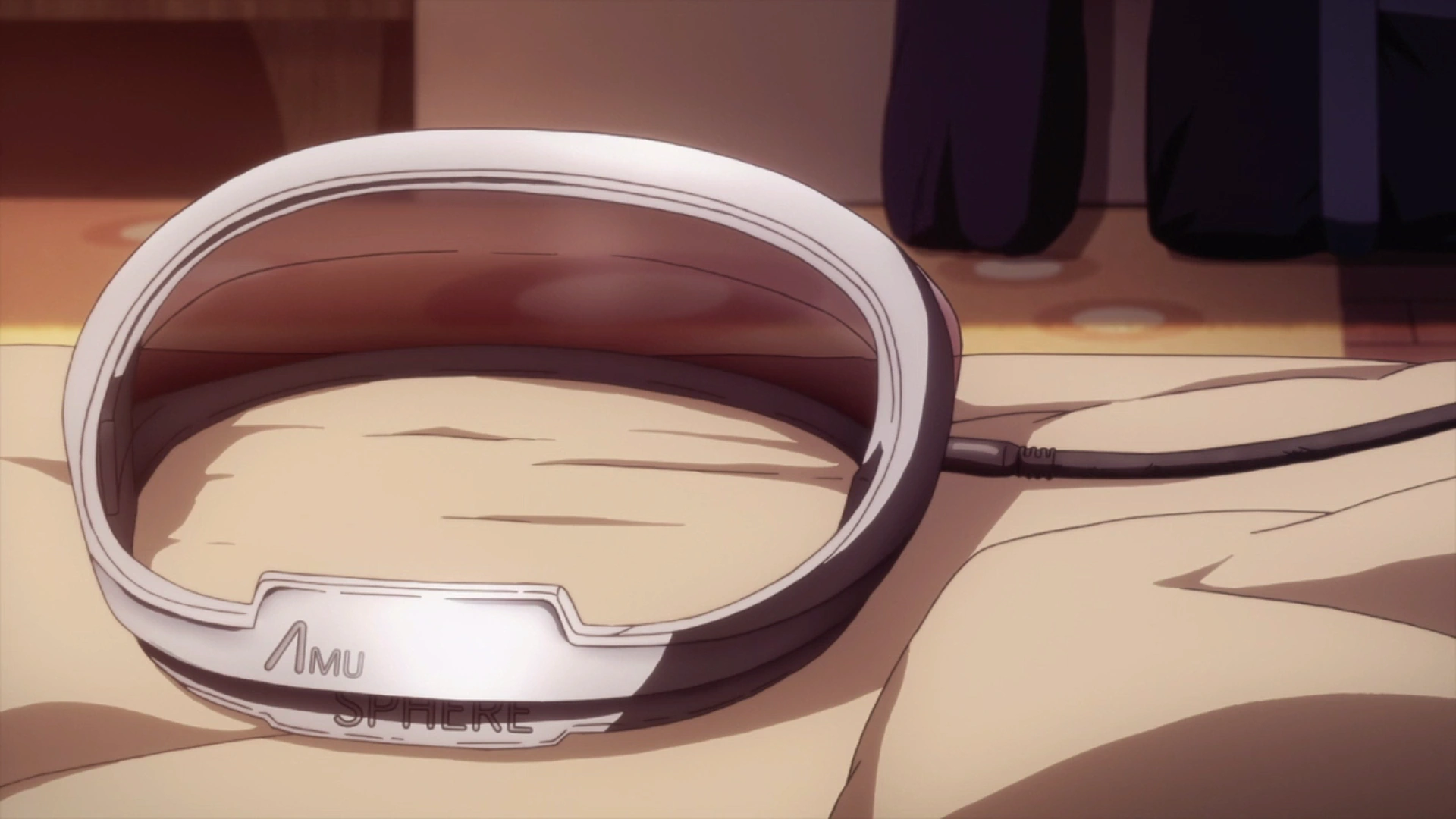A brief spoiler-free review of the “Sword Art Online Volume 1: Aincrad” audiobook, narrated by Bryce Papenbrook, written by Reki Kawahara, recorded by Hachette Audio, and released by YenAudio in August 2021. A review copy was provided to me by YenPress following its release.
Revisiting Kawahara’s Famed World of Swords
Ah, Sword Art Online, one of my favorite titles in anime that always seems to get dumped on. Thankfully, the most recent anime adaptation for Alicization (wow, it’s been so long since I got to say that word online!) was able to “redeem” reception for the series overall, despite its own issues. But, as much as I prefer the newer content for SAO than the old stuff, today’s review is about returning to Aincrad—and in its shiny, new audiobook form, no less.
Before getting to the actual experience of SAO in oratory form, I wanted to spend a minute reflecting on this first volume. Unless you’re just now embarking on this franchise for the first time, it’s likely that you haven’t read this first volume in years. Trust me, I had to dust off the cobwebs of my own NerveGear as I jumped back into Kawahara’s famed world of swords. And you know what, I didn’t find it nearly as cringeworthy as my memory served.
As a refresher, Aincrad is the impossibly large, floating castle of the VRMMORPG (impressed that I still remember this ridiculous acronym) Sword Art Online in which nearly 10,000 players are trapped, including Kirito, Asuna, and their allies. Each of the death tower’s 100 floors contains unique terrain—medieval cities, forests, caves, lakes, deserts, mountains, etc.—in addition to a sprawling labyrinth called the floor dungeon. Defeating each floor’s dungeon boss is the only way to unlock the stairway to the floor above, thus progressing the game. It’s already an enticing premise, as each floor typically brings with it new in-game items, quests, places to explore, and above all, a momentous step closer toward the game’s completion. And best (or worst) of all, author Kawahara clearly loves this game world as much as its notorious creator, Kayaba Akihito.
One of my favorite aspects of this novel is the way Kawahara describes the experience of the game world itself. The opening of chic menu windows via “swiping through the air,” the calculative measuring of recovery and reaction times in perilous battles, and even the “shattering of precious polygons” upon the loss of a character’s life are all repeated incidents which Kawahara intently focuses on. The time Kawahara spends fleshing out Kirito’s thought processes as he explores the relationship between the castle and its coding is rarely overdone. If anything, his language can be truly beautiful and inspiring, and his romanticization of Aincrad as both a prison and a palace for gamers immediately appeals as this first volume’s most popular motif. Much to their initial chagrin, Kirito and Asuna slowly start to warm up to the virtual world’s vast beauty, and so does the reader. Aincrad is a colorful fantasy setting, but Kawahara’s inclusion of stylish sci-fi interfaces and comprehendible coding make SAO a fascinating blend of both genres. Additionally, his lyrical prose is amplified by the audiobook format.
Now, as a story, the biggest (and often most criticized) issue with the novel is its pacing. Because the plot begins on day one and caps off at over 2 years of being trapped in the game, many parts of Kirito’s narrative are obviously cut, reordered, or diminished. For example, since we are already acquainted with Lizbeth the blacksmith, Silica the beast tamer, Sachi the guild mate from other parts of the franchise, we find that their omission in this novel really cuts down on the female representation, specifically. I didn’t realize how male-centered this novel was until Bryce Papenbrook (Kirito’s English VA and the audiobook’s narrator) started reading for Asuna’s part. It’s not bad to be missing those characters per se, but I think the masculine gaze is still a valid area for critique.
Still, I would say that the content of this novel holds up even now in 2021. Aside from a couple jarring time jumps and the overt masculine focus of the novel (Kirito, Klein, Agil, Kuradeel, Heathcliff, and others vs. Asuna), the story manages to maintain a compelling hold on what matters most to Kirito in SAO: Asuna. I often find myself comparing the young gamer couple to popular Shakespearean lovers, as Kirito and Asuna’s struggles in SAO are truly accented by the fact that they charge into the darkness together. The honeymoon glow is undeniably one of the cutest parts in the entire series, and as someone who strongly dislikes Yui, I’m glad that I can once again enjoy their love without the annoying fairy AI child that the franchise endorses.
The First “Anime” Audiobook
Let’s get right to the technical aspects of this audiobook. The review copy I was provided by YenPress (thank you!) had a code for Google Play Books, which I’d actually never used before. After downloading the app, it was as simple as redeeming the code and hitting the play button. Google Play Books divides the novel’s audio files by chapter, and you can even bookmark certain areas. Also, the app has a buffer that automatically reloads the previous second or two when you pause it for a while. As someone who frequently had to “put the book down” to attend to other activities, this was extremely helpful.
Now let’s talk about the most interesting part: the audio narration. Bryce Papenbrook, who plays Kirito in the show’s English dub, has a naturally raspier voice. This presents a few obvious challenges when it comes to portraying more soulful or smooth-toned voices. As such, I placed my earbuds aware of my skepticism. As it turns out, however, Papenbrook is still a pro, and there was truly little for me to worry about even as early as 10 minutes in. He manages to have a secure hold on SAO’s overall tone and all its characters far better than most actors would for their projects. I could especially sense Papenbrook’s care in his lines where Kirito experienced loss of any kind. Instead of it coming across as edgy and cringe like the first anime does at times, Papenbrook’s Kirito in the audiobook has a remarkably deep sense of fear and anxiety, which is more than fitting given this first novel’s overwhelming sense of isolation and loss.
Not only has Papenbrook improved in voicing Kirito’s nuanced sarcasm and wit, but also he surprised me in his ability to portray the entire cast with stunning depth. How he was able to match Klein’s enthusiastic, wannabe hero just as well as the actual English VA’s performance was amazing. The same could be said for Agil’s deep suave, Heathcliff’s principled disconnection, and Kuradeel’s wheedling insanity—Papenbrook goes beyond simply changing his vocal register and gives all these characters defining vocal quips, variations in breath, and unique tones. Flipping between these characters must’ve been exhausting. But hey, I suppose that’s why they hired a voice-over artist for the job—and one who knows and loves the franchise enough to put care into delivering the whole story, even in its most questionable moments.
Also, can we talk about Bryce’s Asuna?? Like, how did he make her appear in my mind just as the original text and Cherami Leigh’s performance does? Given Asuna’s importance as Kirito’s other half, I figured that hearing Kirito’s own voice for both of them would’ve been the novel’s biggest turnoff. I think I was able to enjoy his performance so much because he does more than “try to sound like a girl” when voicing Asuna. Asuna’s personality is defined by her dual presence—the tough and cold “Asuna the Flash” and the warm, vulnerable Asuna that invites Kirito to her apartment—and Papenbrook’s acting for both is starkly different. He retains Asuna’s character by portraying these traits first, then putting the higher vocal pitch behind it, and the result is that she blends seamlessly into the narrative rather than obnoxiously standing out.
A New Outlet for Anime AND Bookish Fans
What is gained through the SAO audiobook—widened accessibility, “new” content, and a closer relationship to Papenbrook as an actor/fan of the franchise—comes, of course, at costs in the visual department. For one, we lose all of abec’s fantastic artwork that accompanies the light novel. His early stuff isn’t necessarily impressive, but I couldn’t imagine the series without his artwork for GGO and Underworld later down. That said, Kawahara’s “Afterword” is preserved in the audiobook, which was a pleasant surprise.
I think the biggest concern facing the SAO audiobook is the sheer number of female characters to come. (Literally, Volume 2 introduces FOUR new female side characters.) Papenbrook might’ve been able to handle Asuna well, as she is somewhat tomboyish in her own actions, but I wonder if he would also portray Lisbeth with the same natural nasal that her English VA has, or if he’ll attempt to go falsetto voicing Yui. OR, it could be a possibility that the torch will be passed onto another VA from the dub to read Volume 2. After all, Cherami Leigh is credited along with Bryce for the second volume’s listing. (It’d be cool if this became a sort of full-cast project once it gets going!) I suppose we’ll find out what they do when Volume 2 releases on October 18.
Seriously though, I continue to respect what Bryce Papenbrook does with the black swordsman throughout their run together, and I’m genuinely curious (assuming that Yen goes this far into dubbing) as to how he might play Eugeo, Kirito’s friend, foil, and one of the franchise’s most beloved characters.
For now though, I would definitely say that the audiobook is worth listening to, especially if you have a friend who is convinced they want to get into the series but they don’t care for anime. As for if I personally would want more SAO audiobooks in the future—absolutely, bring it Yen! On an entirely separate note, I’m particularly excited for The Miracles of the Namiya General Store and how that story will be read. I’m entirely optimistic about this whole project of inviting VAs to read our favorite light novels, and if Yen is willing to send me review copies in the future—Well, let’s say that I’m all ears for more.
Afterword
Special thanks again to YenPress and YenAudio for sending me an audiobook review copy of Sword Art Online Volume 1: Aincrad. (I love the project so much, and I apologize that this review came a month past the audiobook’s release!) To my readers, what do you think of the idea of light novel audiobooks? Also, would you consider revisiting the original Aincrad story in this new format or are you content with the books and/or the anime? Let me know down in the comments! Thank you so much for reading, and till next time!
– Takuto









































